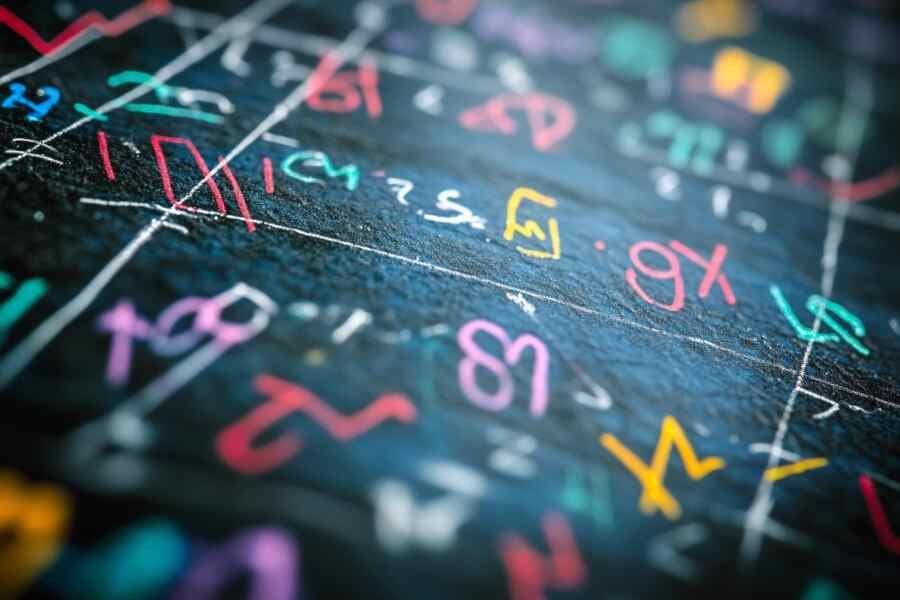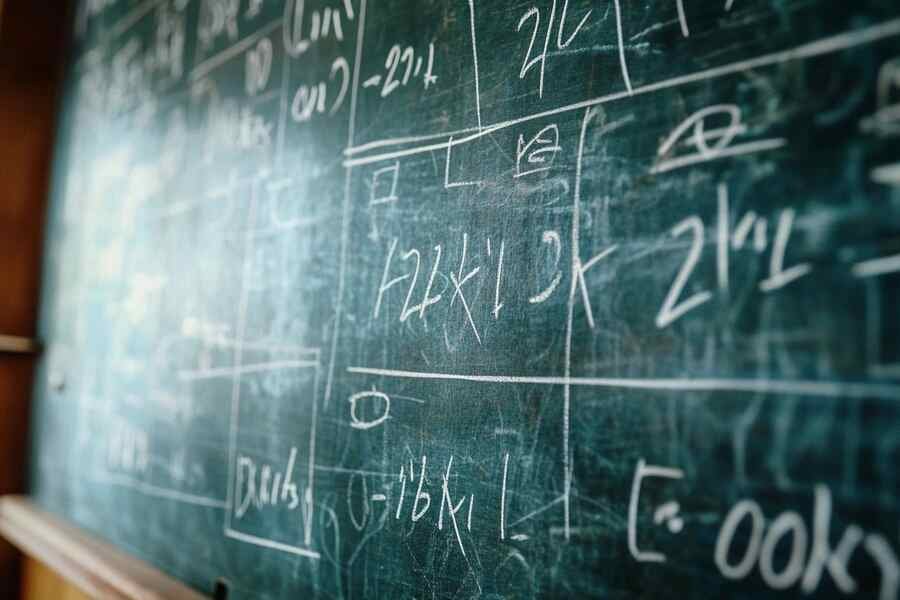Interval
Interval is a “connected” subset of a total (or linear) ordered set of carriers (for example the set of real numbers R designated. You can use them in analysis, order topology and related areas of mathematics.
Overview of the intervals
A round bracket or a square bracket standing outwards indicates that this edge point is not an element of the interval. In the case of an inward-pointing square bracket, the edge point is part of the interval:
Example (intervals)
- [1, 2] = x ∈ R : 1 ≤ x ≤ 2
- [1, 2) = x ∈ R : 1 ≤ x < 2
- ]1,2] = x ∈ R : 1 < x ≤ 2
- ]1,2[ = x ∈ R : 1 < x < 2
To distinguish between open and closed intervals
An open interval (a, b) and a closed interval [a, b] differ in that at the open interval (a, b) the edge points a and b are not elements of the interval, while this is the case with the closed interval [a, b] is already the case. This is also the main difference between the two types of intervals, which explains all other differences.
This difference also explains the naming of the individual intervals. In topology a set is called open if and only if none of its boundary points is an element of the set. Furthermore, a set is complete when it contains all of its boundary points. Open and closed sets are studied more closely in the topology.
Improper intervals
It is also possible that an interval is limited to only one side. Such an interval is then called an improper interval :
| Notation | definition | picture |
|---|---|---|
| (-∞, a] or ]-∞, a] | x ∈ R : x ≤ a |  |
| (-∞, a) or ]-∞, a[ | x ∈ R : x < a |  |
| [a, ∞) or [a, ∞[ | x ∈ R : x ≥ a |  |
| (a, ∞) or ]a, ∞[ | x ∈ R : x > a |  |
Note
Please note that the sign ∞ is in a very precisely defined context (no lower or upper limit for x. You can not calculate with this symbol like with normal real numbers!
Interval (mathematics) Exercises : Questions and Answers
1. Translate an inequality by an interval. Write each of the following sets of reals as an interval:
1. the set of reals xx such that −3≤x≤7
2. the set of real numbers xx such that x> −7
3. the set of real numbers xx such that x≤0
Indication
General method
1. we start by representing the real numbers verifying this inequality (this framing) on the number line;
2. the limits of the interval are determined using this representation;
3. we are finally interested in the meaning of the brackets.
Corrected
1. [−3; 7]
2. ] −7; + ∞ [
3. ] −∞; 0]
2. Prime numbers in an interval. Statement Determine all the prime numbers in [1; 13 [
Answer Key
These numbers are 2, 3, 5, 7 and 11. 13 does not belong to the interval [1; 13 [, and 1 is not a prime number.
Read also: Math Symbol | What Does This Symbol Mean in Mathematics?
3. Belongs or not? Complete with the symbol of membership ∈∈ or non-membership ∉∉.
1. 1⋯[0;2]
2. −1⋯[0;2]
3. 1⋯]−∞;2[
4. 1⋯]−∞;−2]
5. 1⋯[1;2]
6. 1⋯]1;2]
7. 10−³⋯[0;1]
8. π⋯[3,14;3,15]
9. −2⋯]−√2;√2[
Answers:
1. 1∈[0;2]
2. −1∉[0;2]
3. 1∈]−∞;2[
4. 1∉]−∞;−2]
5. 1∈[1;2]
6. 1∉]1;2]
7. 10−³∈[0;1]
8. π∈]3,14;3,15[
9. −2∉]−√2;√2[
4. Inequalities. Produce the following frames. We consider a real number xx such that −2 <x≤1−2 <x≤1. Box the following expressions:
1. x + 1
2. x − 4
3. 3x
4. −2x
5. −x/2
6. 2x − 7
Indication
Apply the following rules:
we do not change an inequality by adding a real number to each member;
we do not change an inequality by multiplying it by a positive real; we must reverse its meaning if we multiply it by a negative real.
Answers:
1. We add + 1 to each member, and we find −1 <x≤2
2. We add −4 to each member, and we find −6 <x≤ − 3
3. We multiply by 3 which is a positive real, and we find −6 <3x≤3
4. We multiply by −2, which is a negative real, and therefore we change the direction of the inequalities. We find 4> −2x> −2
5. We multiply by −1 / 2 which is a negative real and therefore we change the direction of the inequalities. We find 1> x≥ − 12
6. We multiply by 2, which is a positive real, and we find −4 <2x≤2. We then add −7 and finally we find −11 <2x − 7≤ − 5
5. Inequalities. Solve the following inequalities:
1. 2x + 3≥4
2. −3x − 4 <−2
Indication
Start by isolating the unknown on one side by using the fact that we do not change an inequality by adding the same term to the right side and to the left side. Then multiply by a constant to reduce to an inequality involving only xx. Watch out for the constant sign!
Answers:
1. We start by adding −3 in the left and right side of the inequality. The inequality is equivalent to 2x≥1
We then multiply each member by 1/2, which is positive. We must therefore not change the direction of the inequality, which is equivalent to x≥1 / 2
Finally, the set of solutions is the interval [1/2; + ∞ [
2. We start by adding 4 to each of the members of the inequality. The inequality is equivalent to − 3x <2
Then multiply by −1 / 3, which is negative, so we must change the direction of the inequality. The equation is therefore equivalent to x> −2 / 3
The set of solutions is ] −2/3; + ∞ [
Sources: PinterPandai, Study, Brilliant


